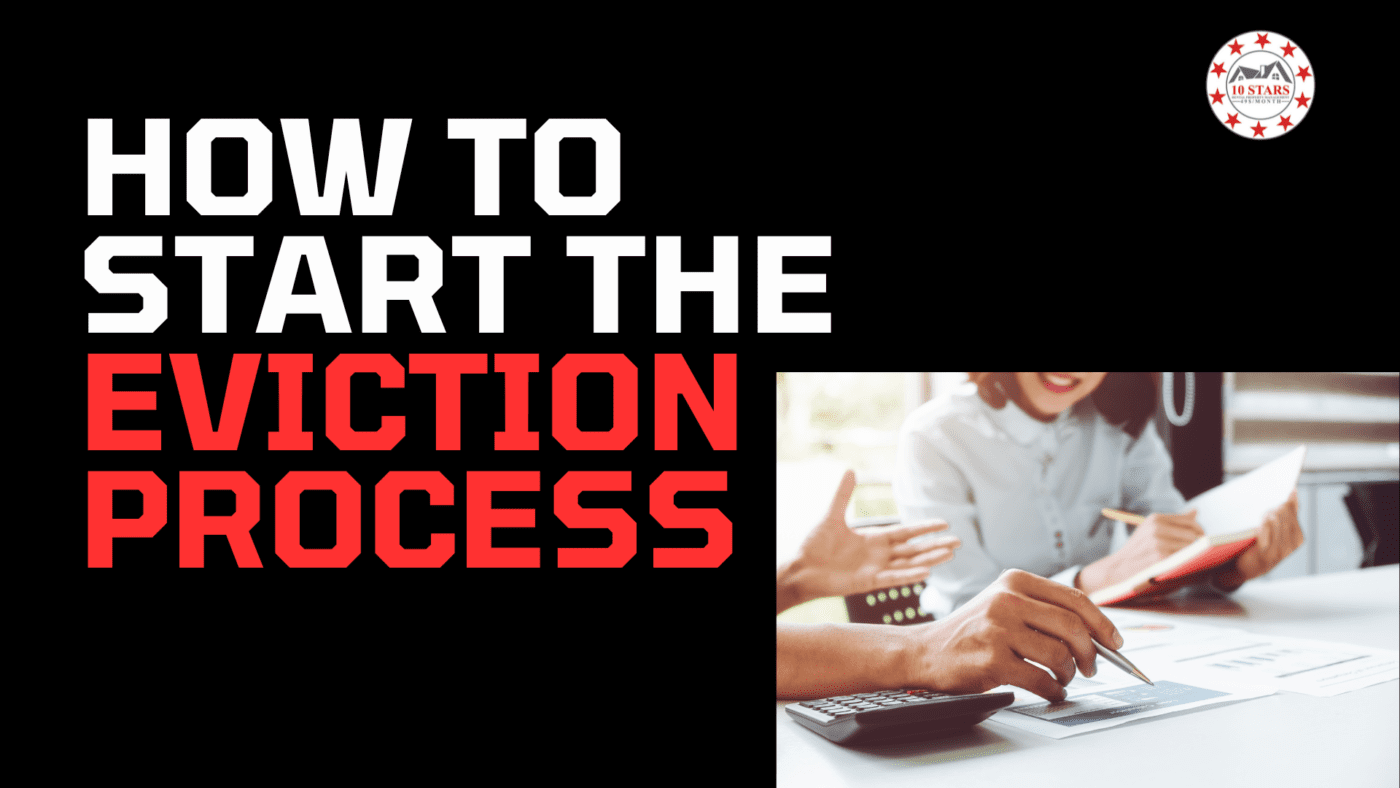As a landlord, there may come a time when you need to start the eviction process for one of your tenants. This can be a difficult and emotional process, but it’s important to take the necessary steps to protect your property and your investment. In this blog post, we will provide you with a step-by-step guide on how to start the eviction process.
Step 1: Review Your Lease Agreement
Before you start the eviction process, it’s important to review your lease agreement to ensure that you have legal grounds for eviction. In most cases, a landlord can evict a tenant for non-payment of rent, lease violations, or illegal activities on the property. However, it’s important to make sure that the lease agreement is clear on what constitutes a violation and what the consequences will be.
Step 2: Provide Written Notice
Once you’ve determined that you have legal grounds for eviction, the next step is to provide written notice to your tenant. The notice should include the reason for the eviction, the date by which the tenant must vacate the property, and any other relevant details. In most cases, the notice should be delivered in person or by certified mail to ensure that the tenant receives it.
Step 3: File an Unlawful Detainer Lawsuit
If the tenant does not vacate the property by the date specified in the written notice, the next step is to file an unlawful detainer lawsuit. This is a legal process that allows a landlord to obtain a court order for eviction. In most cases, the landlord will need to hire an attorney to file the lawsuit and represent them in court.
Step 4: Attend the Court Hearing
Once the unlawful detainer lawsuit has been filed, the landlord and tenant will be scheduled to attend a court hearing. At the hearing, the landlord will need to provide evidence to support their case for eviction. This may include documentation of lease violations, proof of non-payment of rent, or other relevant evidence.
Step 5: Obtain a Court Order for Eviction
If the judge determines that the landlord has legal grounds for eviction, they will issue a court order for eviction. This order will specify the date by which the tenant must vacate the property. If the tenant does not comply with the court order, the landlord may need to hire a sheriff or other law enforcement officer to forcibly remove the tenant from the property.
Step 6: Collect Past Due Rent and Other Damages
Once the tenant has vacated the property, the landlord may be able to collect past due rent and other damages. This may include unpaid rent, damage to the property, or other expenses incurred as a result of the eviction process. In some cases, the landlord may need to hire a collection agency or file a lawsuit to collect these damages.
Tips for a Successful Eviction Process
Starting the eviction process can be a difficult and emotional process for both landlords and tenants. However, there are several things that landlords can do to help ensure a successful eviction process:
- Communicate Clearly: It’s important to communicate clearly with your tenant throughout the eviction process. Make sure that your tenant understands the reason for the eviction and the steps that will be taken if they do not comply with the written notice. Be polite and respectful in all communications.
-
Follow the Law: It’s important to follow all applicable laws and regulations throughout the eviction process. This includes providing proper notice, filing the correct paperwork, and following all court procedures. Failure to follow the law can result in a failed eviction attempt and possible legal action against the landlord.
-
Document Everything: It’s important to keep detailed records of all communications, notices, and other documentation related to the eviction process. This can help protect the landlord if the tenant decides to file a lawsuit or make other claims against them. Keep a record of all dates, times, and details of each communication.
-
Be Patient: The eviction process can take time, and it’s important to be patient and follow all legal procedures. Rushing the process or taking shortcuts can lead to legal problems down the road. The landlord should plan for the eviction process to take several weeks or even months.
-
Consider Alternative Solutions: Eviction should be the last resort. The landlord should try to work with the tenant to find alternative solutions, such as payment plans or mediation, before starting the eviction process. If the landlord can avoid eviction, it can save time, money, and stress for both parties.
-
Hire an Attorney: Eviction laws can be complex and vary by state. Hiring an experienced attorney can help ensure that the eviction process is handled correctly and legally. An attorney can also provide advice and guidance throughout the process.
-
Maintain Professionalism: It’s important for the landlord to maintain professionalism throughout the eviction process. Avoid confrontations or arguments with the tenant, and always conduct yourself in a respectful manner. This can help keep the situation from escalating and make the process smoother for everyone involved.
In conclusion, starting the eviction process can be a challenging and emotional process for landlords. However, by following these tips and taking the necessary steps to ensure a legal and fair process, landlords can protect their property and investment. Remember to communicate clearly, follow the law, document everything, be patient, consider alternative solutions, hire an attorney if necessary, and maintain professionalism throughout the process.

